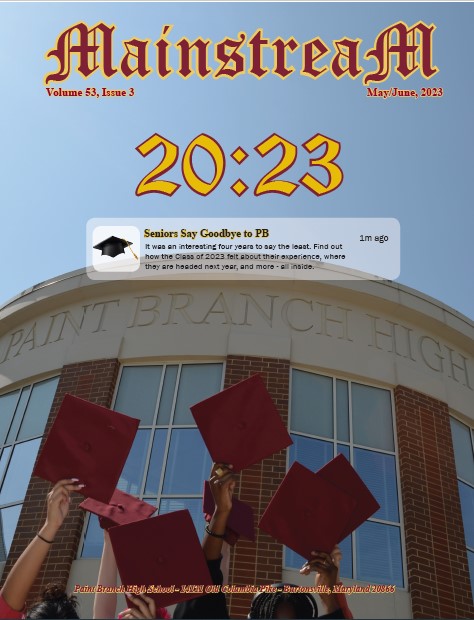On August 4, 2025, Montgomery County Public Schools (MCPS) officially announced a new grading system for grades 6-12 (middle school and high school) to “increase consistency, and strengthen expectations for student learning and accountability across schools”. In a one-pager, MCPS listed the changes, which include grade calculations, county assessments, report cards, and other key areas.
The first, and probably the most significant change, is that teachers will no longer use grade calculation charts to determine semester grades; instead, they will calculate these final grades using numeric averages. To determine the semester course grade, the two grades from those marking periods in that semester will be added and then divided by 2. For full-year course grades, all grades from each marking period will be added and then divided by 4. Additionally, Biology and NSL Government courses in the 2nd semester have an end-of-course exam, which will count for 20% of that semester’s grade.
When asked about the NSL Government end-of-course exam and its status as a grade, history teacher Mr. White thinks it’s good because he believes it will encourage people to put more effort in tests that were not previously graded and help people with college, as he claims that there are fewer assessments in college than in high school, and they have to study for a big test. However, he thinks too much testing is a bad thing, so those need to be balanced with activities in class.
Another significant change is that district assessments, which previously didn’t affect student grades, will now be calculated as 10% of the final grade for marking periods 2 and 4 in specific classes. This assessment, as stated in the MCPS revision document, cannot be retaken. This retake policy is the same for “end-of-course assessments, marking period assessments, end-of-semester summative assessments, final research papers, projects, or essays, and culminating projects or performances.
In terms of deadlines, the revision notes that these can’t be more than 10 days after the original due date anymore, and in order to speed up the process of grade distribution, late work won’t be accepted during the final 5 days of a marking period. Talking about work, students will no longer be guaranteed a grade of at least 50% unless it’s determined by a teacher that the student “shows evidence of making progress on the relevant standards that are being assessed, regardless of product or accuracy.” A few other minor changes include, obviously, a new report card, and teachers returning student work within 10 days.
Social Studies Resource Teacher Mr. White’s initial reaction to the new grading system is that it’s more sensible than the old one because it factors in percentages. He also believes that with the old system, it was easy for students to “game” the system. To him this was because they could earn a certain grade in one quarter and then didn’t have to put the same effort into the next quarter, and still get a “decent” semester grade.
One person who questions the changes is PB Senior Michael Sylvester because he claims the new grading system is “a huge gamble on whether or not people have the willpower to actually do it.” That being said, he thinks it will be a good implementation for younger students or 9th graders for them to get used to the new changes. However, he says, “when it comes to juniors and seniors who are used to the status quo, I feel like that’s doing them a great disservice.”
It seems like, despite the system changing, some people aren’t worried about it all. Senior Matthew Jiatz says he doesn’t care, and that the changes don’t really affect him since he has always done things with the same mindset: “do it on-time and do it good,” and doesn’t see any reason for this to change anytime soon.
Whether or not the grading system will revert to its original state or change to something new entirely is unknown, but at least for this year, the grading system will be the way it is now.








































